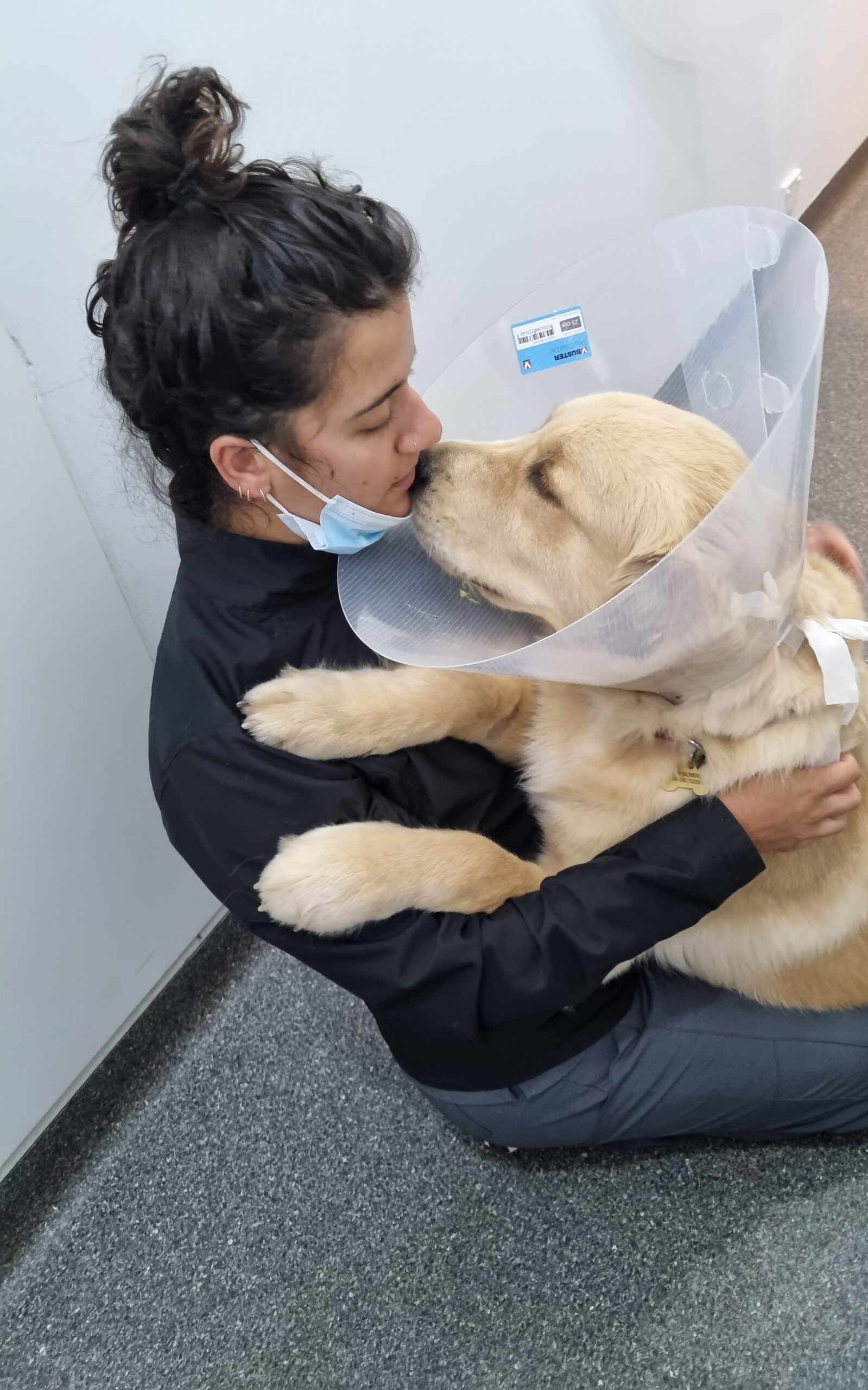Getting ready for surgery can be just as important as the post-surgery recovery. Here are some ideas from MSD Animal Health on what will help you through this process.
Due to illness, disease or trauma, your pet may one day require surgery. While potentially stressful (for both you and your pet) there are a few basic guidelines that you can follow that will make the process as complication-free as possible and put your pet on the fast road to recovery. Depending on the type of surgery, whether minor or major, your veterinarian will advise you when your pet can resume his/her normal lifestyle.
Pre-Surgical Instructions
Your veterinarian will do a check-up on your pet before the surgery to determine if there are any pre-existing conditions that may interfere with the surgical procedure and they may suggest a blood test to screen for disease. Additionally, your veterinarian will give you instructions to limit/stop food and water prior to the surgery.
Post-surgical instructions
The Village Vet team will give you post-surgical instructions. Please follow these guidelines carefully and allow sufficient time to collect your pet and run through instructions with one of our nurses at the time of collection.
Collecting a pet post-surgery can be a distracting time with lots happening, high emotions and instructions to remember. Therefore, it is important to re-read your vet’s follow up notes carefully when you get home and be sure to follow them accurately.
- Your pet may be weak or groggy after surgery. Do not let him/her get too excited.
- Restrain your animal with a leash or put them in a carrier when leaving the clinic. This will protect them from additional injury.
- It might be worth bringing a friend or family member along so one of you can nurse your pet in the car on the way home.
- Provide only small amounts of food and water until your pet readjusts to being at home and is recovering. Too much food and water can lead to upset stomachs or vomiting.
- If a special post-surgical diet has been prescribed, follow all instructions carefully.
- Limit your pet’s exercise. Climbing stairs, jumping or running may be painful or disrupt wound healing.
- Make sure your pet’s sleeping area is clean, warm and free of draughts. Preferably, keep your pet inside post-surgery in a clean dry environment.
- Your veterinarian may prescribe medication to administer during your pet’s recovery. Follow all label instructions carefully.
- Sutures are usually removed approximately 10-14 days after surgery. However, this will vary with the specific surgery.
- Check the area around the incision daily for any redness, swelling or discharge. If you detect any irritation, contact your veterinarian immediately.
- Prevent your pet from licking or chewing on the wound. If this is difficult to do, you should provide a physical barrier by placing an ‘Elizabethan collar’ around their head.
- Your vet will advise you when to return to remove sutures.
Physio and Rehabilitation for Dogs
Physical rehabilitation therapies have become very popular in pets. After major surgery, we humans are referred for physical therapy to help restore normal body mobility, movement and function. We also use various forms of physical therapy to help manage pain and discomfort of conditions such as osteoarthritis and musculoskeletal injuries and other problems.
So, it makes sense that when our animals experience injury or trauma – or suffer from the same debilitating degenerative diseases – we support their recovery and quality of life through physical therapies and rehabilitation.
Your pet can benefit greatly if they are suffering from pain, lack of mobility, discomfort following orthopaedic surgery, intervertebral disc disease, soft tissue injuries, obesity and so on.
Activities you may wish to look at include:
- Range of motion and stretching exercises – these exercises are important in the improvement of joint motion and mobility in pets after surgery, or those with chronic orthopaedic or musculoskeletal. They help prevent adhesions between soft tissue and bone, improve muscle extensibility and prevent further injury to joints, ligaments, tendons and muscles.
- Therapeutic Exercises – The exercises included in your pet’s rehabilitation program can vary depending on diagnosis, but common methods involve standing and walking, controlled leash exercises, treadmill walking, hydrotherapy, stair climbing, stepping over poles, exercises with therapy balls and sit-to-stand activities.
Although physical rehabilitation is not a solution for every illness it can be used to help your pet lead a more active, pain free healthier life for longer.
If you feel your pet would benefit from physical therapy, please make an appointment with our clinic to discuss the options available.
You can also find some dog stretching exercise videos at Both Ends of the Lead. These will walk you through some basic stretches but ensure you have had the all clear from your vet at The Village Vet before starting any of these stretches.
Physio and Rehabilitation for Cats
Cats can often become withdrawn when they are in pain or in recovery. It is important to keep a close eye on your cat during this time and continue to interact even if they are withdrawing from you.
- Ensure that your cat has a warm, comfortable place to sleep that is away from drafts.
- Their litter tray should be large, with low sides.
- Place steps near favourite sites where your cat likes to hang out to aid in getting up and down.
- Place food, water and litter trays on one level so your cat does not need to use the stairs.
- Trim nails regularly and brush your cat’s coat so that matts do not develop.
- Where possible, provide non-skid floor surfaces.
- Massage and hydrotherapy can relieve pain and be useful options for some cats.
- Grooming makes a cat feel great so if they are not able to groom effectively consider getting a nice gentle grooming mit and enjoy this extra bonding time together.
Sources
- Dr Martine Perkins, The Village Vet (Pymble Vet Clinic and Killara Vet Hospital)
- MSD Animal Health: Pre/Post Operation
- 4Cyte Pathology.
- Both Ends of the Lead Stretching Videos


